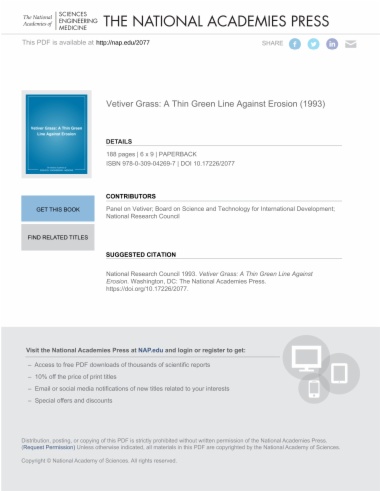

For developing nations, soil erosion is among the most chronic environmental and economic burdens. Vast amounts of topsoil are washed or blown away from arable land only to accumulate in rivers, reservoirs, harbors, and estuaries, thereby creating a double disaster: a vital resource disappears from where it is desperately needed and is deposited where it is equally unwanted.
Despite much rhetoric and effort, little has been done to overcome this problem. Vetiver, a little-known tropical grass, offers one practical and inexpensive way to control erosion on a huge scale in both humid and semi-arid regions. Hedges of this deeply rooted species catch and hold back sediments while the stiff foliage acts as a filter that also slows runoff and keeps moisture on site.
This book assesses vetiver's promise and limitations and identifies places where this grass can be deployed without undue environmental risk.